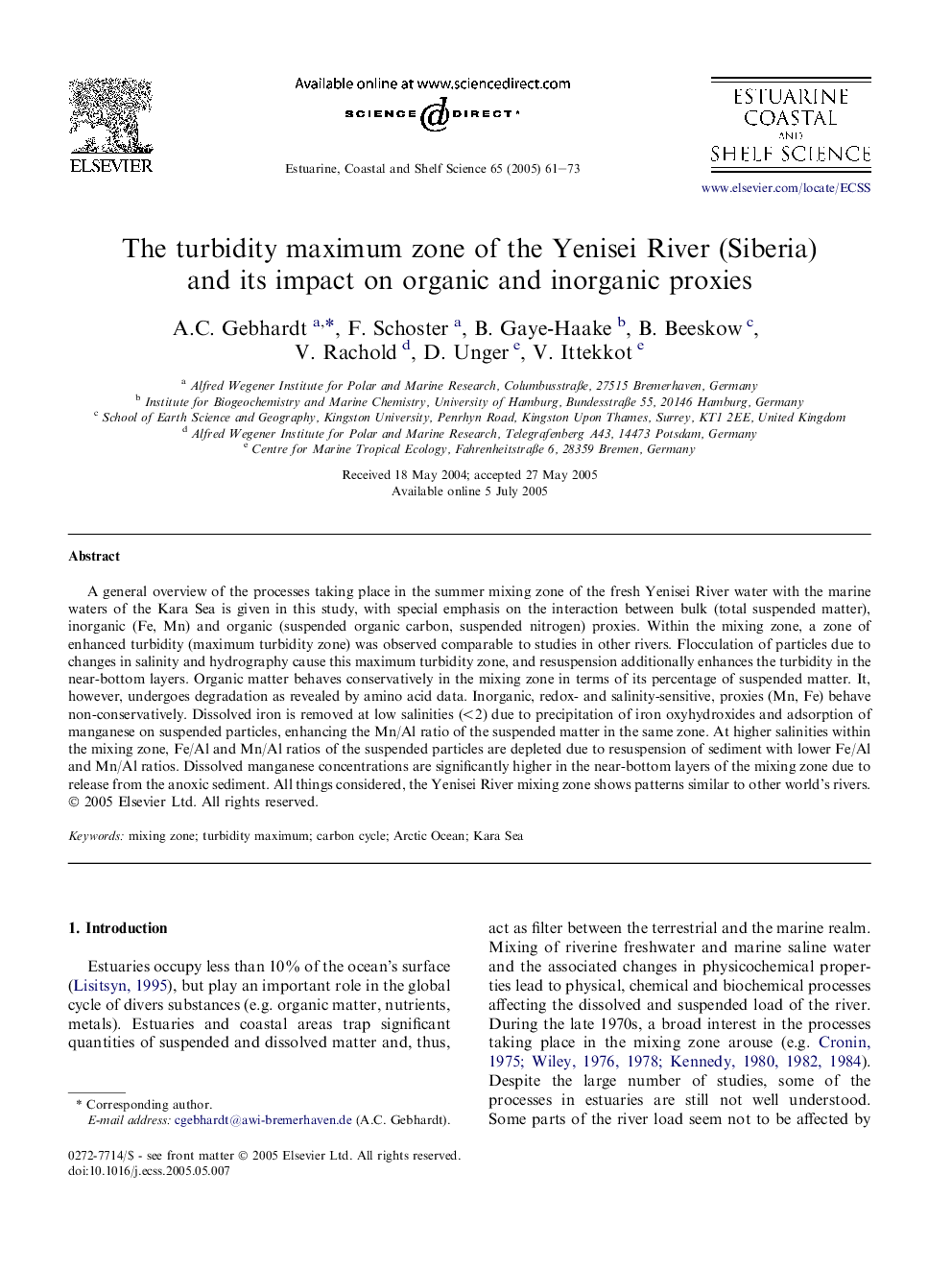| Article ID | Journal | Published Year | Pages | File Type |
|---|---|---|---|---|
| 9480653 | Estuarine, Coastal and Shelf Science | 2005 | 13 Pages |
Abstract
A general overview of the processes taking place in the summer mixing zone of the fresh Yenisei River water with the marine waters of the Kara Sea is given in this study, with special emphasis on the interaction between bulk (total suspended matter), inorganic (Fe, Mn) and organic (suspended organic carbon, suspended nitrogen) proxies. Within the mixing zone, a zone of enhanced turbidity (maximum turbidity zone) was observed comparable to studies in other rivers. Flocculation of particles due to changes in salinity and hydrography cause this maximum turbidity zone, and resuspension additionally enhances the turbidity in the near-bottom layers. Organic matter behaves conservatively in the mixing zone in terms of its percentage of suspended matter. It, however, undergoes degradation as revealed by amino acid data. Inorganic, redox- and salinity-sensitive, proxies (Mn, Fe) behave non-conservatively. Dissolved iron is removed at low salinities (<2) due to precipitation of iron oxyhydroxides and adsorption of manganese on suspended particles, enhancing the Mn/Al ratio of the suspended matter in the same zone. At higher salinities within the mixing zone, Fe/Al and Mn/Al ratios of the suspended particles are depleted due to resuspension of sediment with lower Fe/Al and Mn/Al ratios. Dissolved manganese concentrations are significantly higher in the near-bottom layers of the mixing zone due to release from the anoxic sediment. All things considered, the Yenisei River mixing zone shows patterns similar to other world's rivers.
Related Topics
Physical Sciences and Engineering
Earth and Planetary Sciences
Geology
Authors
A.C. Gebhardt, F. Schoster, B. Gaye-Haake, B. Beeskow, V. Rachold, D. Unger, V. Ittekkot,
